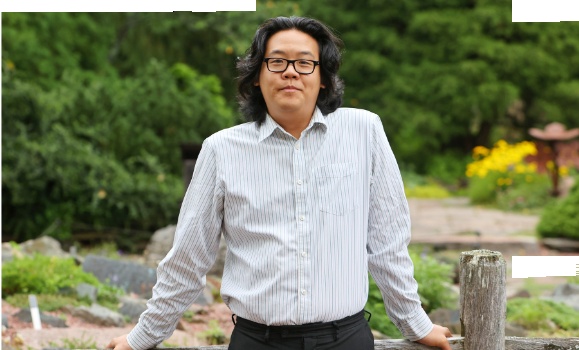Dr. Brandon Heung likes thinking about soil.
“I certainly liked digging holes and things like that as a kid, but I guess a lot of my interest in soil is that it is the interface of many of our vital earth system processes,” explains Dr. Heung, an associate professor in Dalhousie's Department of Plant, Food, and Environmental Sciences. “Soils are the centre of my universe. The better our soil functions, the better everything works because soil security is related to water security, food security, energy security and ecosystem services. Soil is everything when you think about it.”
Dr. Heung’s work falls under the umbrella of digital soil mapping and understanding how soils change over space and time.
Soil mapping is just as it sounds. It's an actual map that shows the various types of soil properties that are of interest to various stakeholders. But Dr. Heung takes things one step further.
“I do things related to modeling soil status, so what is the state of our soil right now? Looking at techniques to monitor soil change and looking at how well the soil functions based off soil properties,” he explains.
He then transforms that data into knowledge that will help a farmer or a forester or even a higher-level policy maker in terms of defining their carbon policy and climate change mitigation strategies.
Indicators of soil health
Understanding threats to soil health and how it shifts over space and time are important predictors of the long-term viability of soils.¬Ý ¬Ý
Erosion is a major concern. Dr. Heung maps and models soil erosion and redistribution over the landscape. Another major concern is decline in soil organic matter, especially in eastern Canada. Dr. Heung looks at the spatial patterns in those declines and the hot spots of decline. This then provides a tool for policy makers to prioritize their actions or mitigation strategies.
“If we are able to map things like the carbon sequestration potential of soil for example and if they are the right mitigation strategies, there may be ways to put more carbon back into the soil using best management practices,” he explains. “While our soil may be a source of greenhouse gases, it's also the ultimate nature-based solution towards climate change mitigation.
"I think there's a lot of opportunity.”
Dr. Heung also works in forestry and forest productivity and, in particular, growth and yield modeling in forests. “So where should we plant trees to maximize carbon sequestration and optimize tree growth? Some of the work that I'm doing in British Columbia, Ontario, and Nova Scotia is related to predictive ecosystem modeling.”
What he and his team are doing is trying to model the types of ecosystems, which will help develop forest resource inventories, predict how trees will grow in the future, and where to plant trees to optimize their potential.
Dr. Heung and a group of ∫⁄¡œ≥‘πœÕ¯researchers recently received funding from the Forestry Innovation Transition Trust to undertake research on Nova Scotia‚Äôs forests over the next five years.
‚ÄúWe‚Äôre trying to understand carbon dynamics within the forest, looking at how much carbon we can sequester into the soil,‚Äù he said.¬Ý ‚ÄúI like trying to understand the relationship between the environment and soil."
Dr. Heung is also co-chair of a national network of soil scientists or soil mappers known as the Canadian Digital Soil Mapping Working Group — a subsidiary of the Canadian Society of Soil Science whose efforts are directed at coordinating national soil-mapping efforts.
In terms of advancing soil mapping, Dr. Heung believes soil spectroscopy is the next big thing and a priority area for sustainable soil management from local-to national-scales because the new technology will enable the measurement of soil properties at a more cost effective and time efficient way.
Soil spectroscopy examines the electromagnetic characteristics of soils to predict soil properties.
Needle is shifting
How soil functions and how soil management can sustain this function is the idea behind the Centre for Sustainable Soil Management recently established on the ∫⁄¡œ≥‘πœÕ¯Agricultural Campus, led by Dr. David Burton, of which Dr. Heung is an integral part.
The Centre builds on the extensive experience of a team of faculty members experienced in research and teaching on soils in agricultural, forestry and urban environments.
Nationally, the Senate Standing Committee on Forestry and Agriculture is currently completing a study on the status of soil health in Canada. Globally, the Global Soil Partnership emerged out of the Food and Agriculture Organization of the United Nations.
“For me, the most important part of soil mapping and carrying out this national level work is having a team of similar-minded folks that value the importance of collaboration and teamwork,” he said. “We're working very closely with colleagues at the University of Guelph that are experts in spectroscopy and also soil organic matter characterization and soil chemistry.”
This helps to provide the analytical capacity, a very valuable piece of the puzzle.¬Ý ¬Ý¬Ý
“It’s about how everything fits together - which is what I’m interested in - just like a map.”

